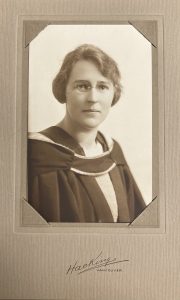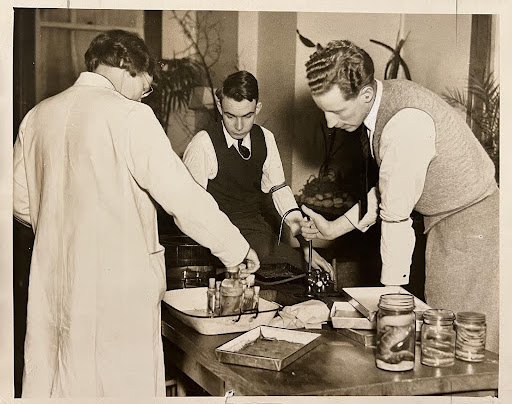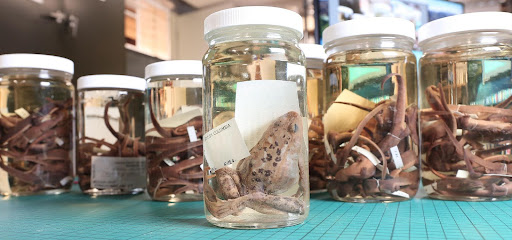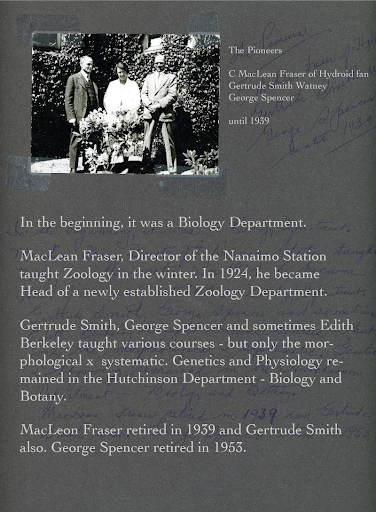
Dr. Gertrude May Smith, 1902-1986. UBC BA Biology 1923; UBC MA Biology 1926, UCal Berkeley PhD 1934. (Photo credit: 1926 Graduation image from UBC archives.
In the annals of history, there are certain individuals whose names may not be widely recognized but whose contributions have left an indelible mark on their fields. Gertrude May Smith is one such figure. As the first woman to join the Faculty of Science at the University of British Columbia (UBC) in 1930, Smith blazed a trail that would inspire generations of scientists to come.
Born at a time when women’s opportunities in academia were limited, Smith defied the odds and pursued her passion for biology with determination and resilience. Her journey at UBC began in the 1920s when she embarked on her undergraduate studies, culminating in a Bachelor of Arts in Biology in 1923. But Smith was not content with just a degree; she immersed herself in the world of scientific research, working as a Lab Instructor while pursuing her Master’s degree.
It was during her graduate studies that Smith’s fascination with salamanders took root. Venturing into the wetlands of Stanley Park and beyond, she meticulously observed and collected specimens, laying the groundwork for her future research. In 1926, armed with her Master’s degree, Smith set her sights on the University of California, Berkeley, to pursue a Ph.D., a degree not yet offered at UBC.
At Berkeley, Smith delved deeper into her studies, focusing on the nasal region of American salamanders—a topic that would form the basis of her doctoral dissertation. Her dedication and expertise earned her recognition from prestigious scientific societies, further cementing her reputation as a formidable scholar.

Gertrude M. Smith, circa 1933, in a labcoat inspecting specimens with students in the UBC Zoology Department.
In 1930, even before completing her Ph.D., Smith made history by becoming UBC’s first female faculty member in the Faculty of Science. Her appointment as an Assistant Professor was a groundbreaking moment, breaking down barriers and opening doors for women in academia. Despite the challenges she faced as a trailblazer, Smith thrived in her role, teaching courses in Zoology and continuing her research on salamanders.
However, Smith’s time at UBC was not without its difficulties. In 1939, her contract as Assistant Professor was not renewed, leaving her without a job and explanation. Speculation swirled about the reasons behind this decision—was it the societal norms of the time, the changing focus of the Zoology Department, or the lack of published material from her Ph.D. dissertation? The truth may never be known, but Smith’s resilience in the face of adversity is undeniable.
Although her academic career was cut short, Smith’s passion for the natural world endured. Her legacy lives on through her daughter, Muriel J. Harris, who followed in her mother’s footsteps, pursuing a career in zoology at UBC. Smith’s influence also extends to her grandsons, who continue the family’s connection to UBC through their own academic pursuits.

Gertrude M. Smith, seated, with students in her 1931 lab. In the back row on the right is Ian McTaggart Cowan, founder of the Cowan Tetrapod Collection. The models and jars suggest this was a comparative morphology lab.
Beyond her scholarly achievements, Smith’s dedication to her craft is evident in the meticulous detail of her work. Armed with nothing more than a manual typewriter and her keen intellect, she produced elegant diagrams and scholarly manuscripts that stand the test of time.
Today, Smith’s contributions to science are preserved in the Cowan Tetrapod Collection at UBC, a testament to her enduring legacy. As we celebrate her pioneering spirit and unwavering determination, let us remember Gertrude May Smith as a trailblazer who paved the way for future generations of women in science.
Read more about Dr. Gertrude May Smith and other contributors to the Cowan Tetrapod Collection here, and check out the newest display window at the Beaty Biodiversity Museum.

Specimen H000437 is one of a pair of Columbia Spotted Frogs collected in 1926 by Gertrude M. Smith from near New Denver, BC, where she was born and lived until she came to UBC in 1919. The CTC has just under 50 specimens of this frog; Smith’s specimens are the oldest. (Photo Credit: Nola Moray)

UBC Department of Zoology History, zoology.ubc.ca/about/department-history

From left to right: UBC Zoology Professor Dr. Judith (Judy) Myers, UBC Zoology Professor and daughter of daughter of G. M. Smith Dr. Muriel Harris, and Collections Curator of the Cowan Tetrapod Collection Ildiko Szabo. Photo by Christine Weiss
Research by Ildiko Szabo, Muriel Harris (daughter of G. M. Smith), and Douglas Harris (grandson of G.M. Smith).
